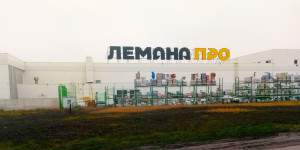The DIY market is still poorly developed in Belarus. The total volume, according to a variety of estimates, amounts to just US $ 700 mio – 800 mio, with around two thirds of this attributable to small private dealers and street markets. Another share goes to the DIY sections of large department stores. Specialist DIY shops, let alone DIY stores, still play a subordinate role. Industry observers believe that Belarus is five to seven years behind its neighbours Russia and Ukraine in terms of the development of modern trading structures. The few DIY stores after the European model are mainly located in the capital, Minsk. Foreign DIY operators are not represented at all. Though Oma, the market leader, actually belongs to Senukai, a Lithuanian company whose majority shareholder is the Finnish Kesko group of companies. So far nothing has come of the proposed arrival of Metrika. In 2010 the Russian DIY chain declared its intention of opening 10 to 15 stores of around 2 000 m² each in towns with a minimum population of 50 000 over the next few years. Investors are not only deterred by the low level of monthly purchasing power that is still just € 108 (as of 2008; half the Lithuanian level): government control of commercial margins and protectionism in the sale of building materials and furniture, for example, also restrict the room for manoeuvre that business players have under Europe’s last dictatorship. Laws and legislation are considered inadequate. There are problems in the acquisition of real estate, rents are high, as are loan interest rates, which cannot be claimed as operating costs. Because there is a shortage of investors, and so of the sources of finance, potential operators have to develop their concepts themselves. What is more, they hardly have any recourse to an efficient infrastructure at shopping centres, for example, or to storage facilities. The case of Oma, with the aforementioned foreign partners, shows how important support from outside can be. Not for nothing is the company rated as the market leader. Founded in 1992, Oma originally functioned as a wholesaler. Its first retail centre was opened in 2003, and it has six relatively large stores in the meantime. According to information from the company, the opening of the first full-service DIY store in the capital of Minsk took place at the end of June 2010. This is where it invested some US $ 13 mio in a DIY store of 5 200 m² and a product offer of 45 000 articles. Oma intends to double its…

DIY and dictatorship
The retail scene in Belarus has a backlog of demand and consequently great potential. Though the regime causes a lot of bother for industry and commerce

 Menü
Menü










 Newsletter
Newsletter